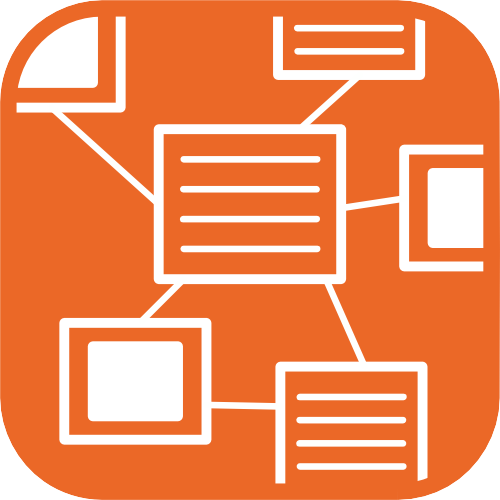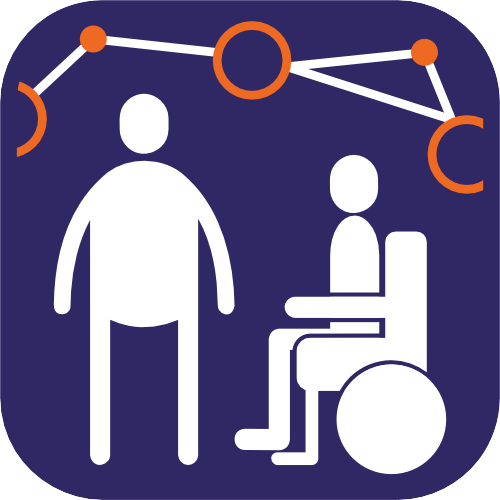Visual Methods of Working

Contents
Mind Mapping
Many learners find it hard to collate their ideas to form an essay or even a short assignment. Mind mapping provides a way to get ideas down before structuring them logically.
The image shows, as an example, the structure and links between the families in Romeo and Juliet – something which may be hard to remember while writing an essay about the play. The image shows how mindmaps are not a linear form and concepts can be added at any stage and to any branch.

Mind Mapping is often done on paper, but using software provides the possibility of re-arranging sections and sub-sections as required. This feature can be really important before the final structure of a task is decided. For some learners using a computer can also be more accessible than pens and paper.
Learners should be encouraged to learn some basic keyboard shortcuts in the software for example to create a new branch or a sub-branch. This means they do not have to interrupt thought processes by searching for icons to click.
There are many pieces of mind mapping software with different features, but they all achieve the same goal. You may want to consider mind mapping apps for tablets for greater mobility and if a learner prefers to work this way rather than with a mouse and keyboard.
Mind Mapping can also be used for:
- Decision making – set out a range of options and map the influencing factors.
- Group work – making sure everyone’s opinion is recorded and valued
- Plotting a process – all elements can be re-organised as required and sub-processes added.
Links:
- Xmind – Free, basic mindmapping package for Windows or Mac. More features are available in the paid versions https://www.xmind.net/
- iOS apps – List of mindmapping apps for iPad and iPhone at https://www.igeeksblog.com/best-mind-mapping-iphone-ipad-apps/
- Android apps – List of Mindmapping apps for Android at https://www.techrepublic.com/blog/tablets-in-the-enterprise/the-top-five-mind-mapping-apps-for-the-android-tablet/
Symbols
Symbol use can be used to support for literacy, communication and labelling. Access to symbols can be critical for many learners especially if they have utilised them earlier in their life and education.
Technology can be used to generate resources with symbol support. Software such as Boardmaker and SymWriter and Matrix Maker can be used to create visual timetables, sequences and other supports. It is important that the appropriate amount of symbols is used for learners. Using one symbol above each word is likely to be just as hard to understand as no symbols.
There are many different symbol sets and many of the symbols directly represent an object and are therefore easily interchangeable e.g. apple, hamburger, flower. However for many words especially conceptual words e.g. tomorrow, friend, like. These symbols will have been learned over time and therefore it is more important that the learner has access to the symbol set they have use previously.
Software can also be used to enable learners to use symbols in their writing. For many the symbols act as a confirmation that they have typed the right word. Other learners may require the symbol so that they can build sentences. Grids containing words and symbols can be created using Symwriter or Clicker software which learners can use to build sentences.
Useful documents:
https://www.widgit.com/about-symbols/booklets/Symbols-in-Education.pdf
Sequencing
Many learners require tasks to be broken down into sequences. This may be a case of making a list but will usually involve pictures or symbols.
For printed supports Boardmaker or Symwriter software provide straightforward ways of creating symbol supported sequences.
Electronic methods can work in an alternative way by providing a view of one instruction and picture at a time. This may be an advantage or a disadvantage dependent on the learners needs and preferences.
One way of creating sequences is using Pictello on an iOS device. Pictello is really easy to set up and learners and staff can create sequences very quickly. Any text input can be read out to the learners by tapping on the screen. Pictello can also be used on iPod touch or iPhones, providing a much more portable solution. Learners can then keep the device in a pocket until required.
An app with similar features for Android devices is Show and Tell.
Timetabling
Timetables can be adapted to individuals – whether these are simplified text, visual or auditory
When creating visual timetables it is important to follow guidance on the learners specific needs, see the section on symbols for further information for this. But also consider using photographs. Other learners may prefer objects of reference. The following is an example of a visual timetable created in Boardmaker:

Auditory timetables can be created for learners in a number of different platforms. This can be created by using mainstream technology such as Whatsapp or Google Keep. Alternatively these can be programmed into AAC solutions.
Social Stories
Visual stories can help to develop greater social understanding.
According to the National Autistic Society social stories can be used to:
- “Develop self-care skills (eg how to clean teeth, wash hands or get dressed), social skills (eg sharing, asking for help, saying thank you, interrupting) and academic abilities
- Help someone to understand how others might behave or respond in a particular situation
- Help others understand the perspective of an autistic person and why they may respond or behave in a particular way
- Help a person to cope with changes to routine and unexpected or distressing events (eg absence of teacher, moving house, thunderstorms)
- Provide positive feedback to a person about an area of strength or achievement in order to develop self-esteem
- As a behavioural strategy (eg what to do when angry, how to cope with obsessions).”
There are a number of options to create these using technology. Either from generic options such as word processors and note programmes, or more specific tools such as Pictello.

